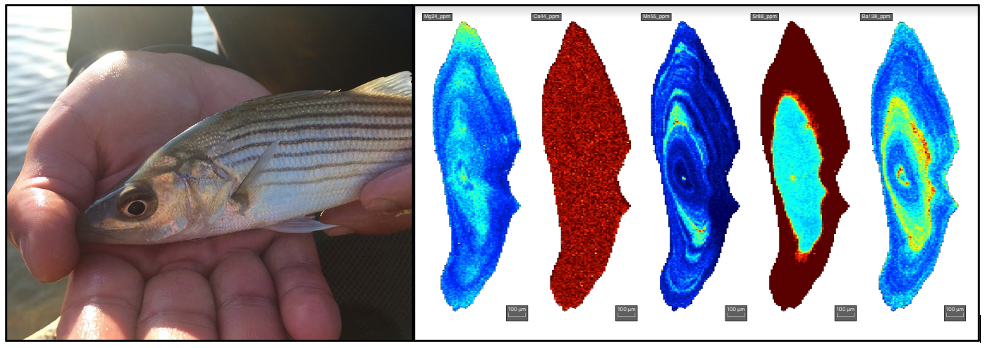Kohma Arai
The University of Maryland Center for Environmental Science
Abstract:
Juvenile fishes depend on nurseries that are both proximate and distant to natal habitats, although drivers that cause juveniles to utilize different nurseries remain unclear. Striped bass exhibits partial migration and diverse habitat use during their early life which could arise from threshold responses associated with early life conditions. The principal nursery region of the Hudson River (HR) striped bass population occurs in freshwater and oligohaline habitats in the lower HR. Juveniles are also prevalent in distant polyhaline habitats in the western Long Island Sound (WLIS) outside the HR. Here, we used otolith chemistry and microstructure to assess the influence of early life history attributes and environmental drivers on early dispersal behaviors of HR striped bass. We hypothesize that (i) brackish water migrants collected in the lower HR and WLIS will originate from cohorts of earlier hatch dates, and (ii) early dispersal is a conditional response, triggered by slower growth and external forces. Nursery habitat use of age-0 juveniles collected throughout the HR and WLIS in August 2020 was assessed through otolith microchemistry (Mg, Mn, Sr, Ba) using Laser Ablation ICPMS analysis given the strong salinity gradient across HR and WLIS nurseries. Hatch dates and early growth were estimated through otolith microstructure and compared between freshwater residents and brackish water migrants. The influence of temperature and freshwater flow conditions on early dispersal were also assessed. Otolith microstructure analysis indicated that brackish water migrants hatched almost two weeks earlier compared to freshwater residents. Migrants also showed higher early growth despite early hatch dates and experiencing lower temperature conditions. Migrants experienced significantly higher flow conditions during their early life stages, which could be associated with early dispersal behaviors. Understanding the mechanisms underlying early dispersal and WLIS recruitment is important to support long-term persistence of the HR striped bass, which supports one of the most important fisheries in US Atlantic waters.
2022 American Fisheries Society Meeting presentation
© 2024 Jackson School of Geosciences, The University of Texas at Austin


